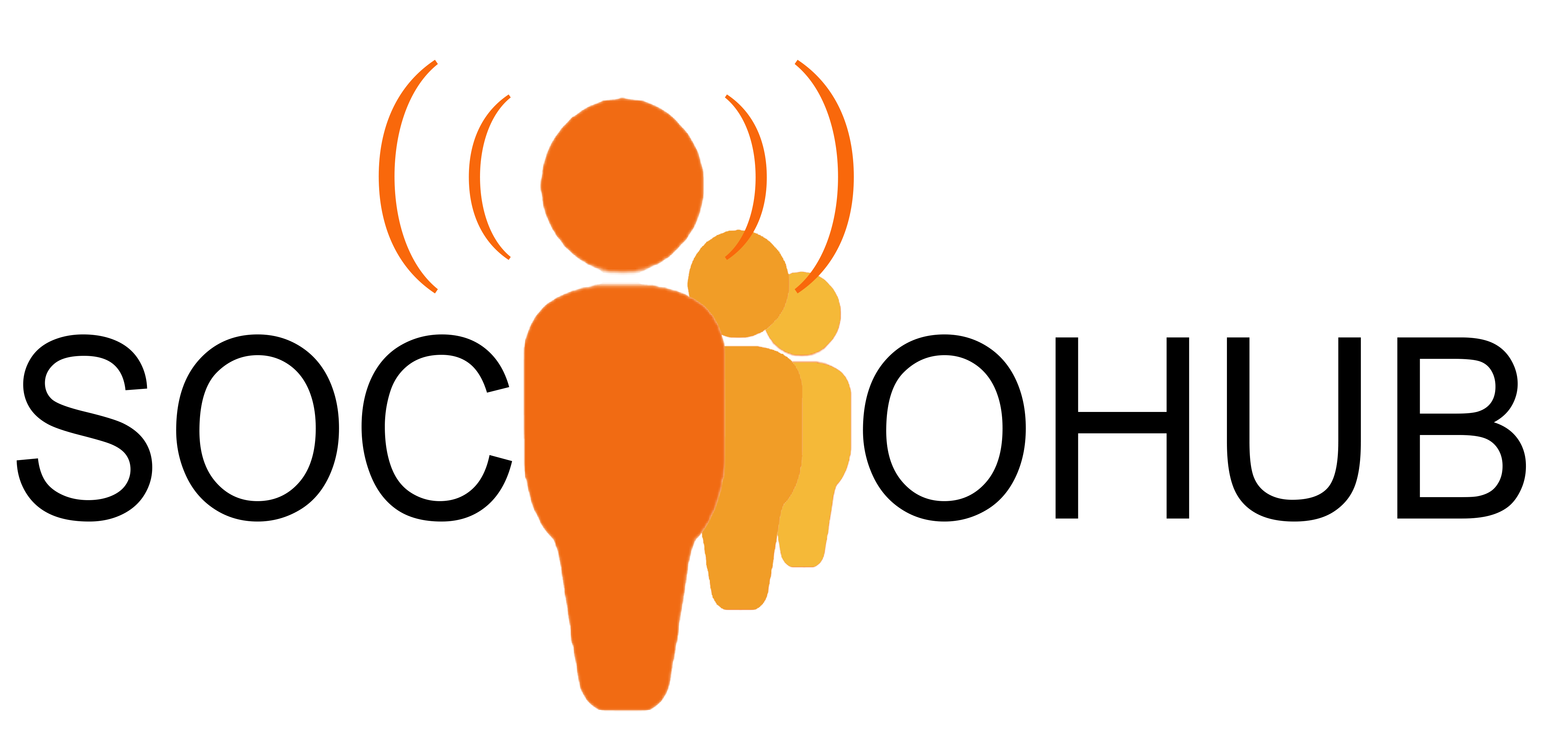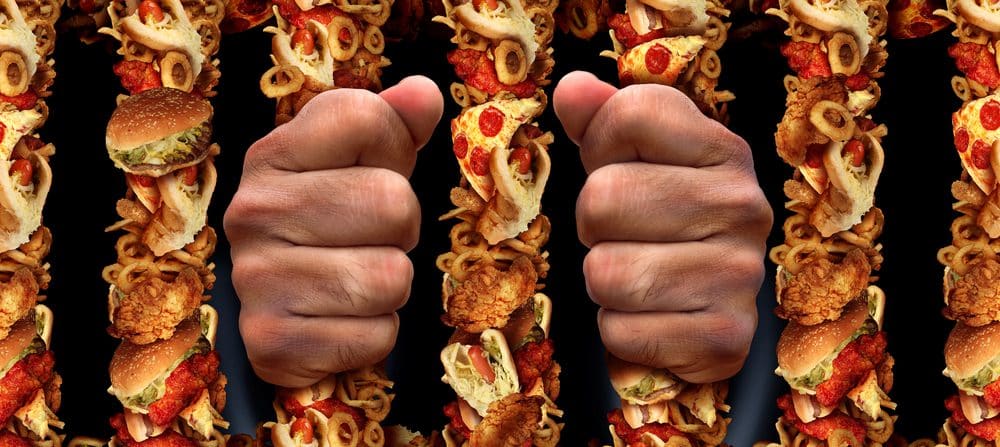Can you imagine being addicted to something that your life depends on and that is part of everyday existence? Most of us have probably dealt with periods in our lives where we over-consumed a bit and had to watch our diet for a few weeks, maybe months. No biggie, right? Everyone can do that. Well, not exactly.
For about 5% of the population it feels impossible to not over-consume and to be healthy, as they are addicted to food. [1] What do we do about that? We invent diets, lifestyles, we tell them to have more willpower. Can you imagine telling that to an alcoholic or a drug addict? Probably not. We need to acknowledge that overweight and obesity is not just a matter of willpower. For many, It is an addiction. We not only need to treat it like that, but we also need to acknowledge who is responsible for this: not just the individual, but the (fast) food industry.
The simple definition of addiction is ‘continuing to use something despite adverse consequences’. And that is exactly what some people experience with food. They keep eating even if they are beyond full and know it will have health consequences. Almost no one is overweight by choice. They cannot stop themselves, as they have become chemically altered and dependent on over-eating. Some studies have actually shown that the medicine Naloxone, that blocks the effects of opioids, decreases food cravings in people with binge-eating disorder [2]. This is a real thing, one that we should take seriously. Because we are all at risk of becoming addicted to food some time in our lives.

It is true that some people are more prone to addiction. But in our post-industrial society, where calorie-rich fast food is literally around the corner, more of us are at risk for food addiction than we might think. To understand this, it’s important to understand how addiction generally works. Which all has to do with this small chemical in our brain that we mainly associate with positive things: dopamine.
Dopamine is part of our reward system, which is responsible for motivation, desires, and cravings. It helps us to learn things based on positive and negative reinforcement. You want to do things that feel good and less of the things that don’t feel good [3]. Now, if that was it, then it wouldn’t be a problem. But there are also substances that naturally enhance our dopamine levels, like alcohol. We learn that these make us happy and consequently we might also think these substances could be the solution to negative feelings. This is reinforced when you try this out and it actually helps. Hence, a new behavior is learned, and for some this can become an addiction [4].
Fortunately, most people don’t resort to drinking alcohol immediately, as this would hinder everyday life. But I’m sure you might recognize resorting to eating food when you weren’t feeling your best. Maybe a box of chocolate, or a burger or two? Which is not surprising, as research suggests that fat and sugar might actually have the same addictive qualities as substances like heroin, as they trigger the same reward system in our brain [5]. In more primitive times, this helped us survive. Eating food when we were hungry would release dopamine and train us that that is what makes us happy, especially calorie-rich nutrition like fat and sugar, which we need less of in order to survive. Unfortunately, they are also harmful when consumed disproportionately and can lead to diabetes, cancer and heart disease.
How vulnerable someone actually is to becoming addicted varies person to person and also depends on other factors like genes, personality and a person’s environment. For instance, low socioeconomic status has been widely accepted as a predictor for worse health outcomes like obesity [6]. Due to various reasons they are more likely to form bad eating habits, which in the right circumstances can become an addiction. It’s a fine line that not everyone will cross, but it’s important to recognize those who are more at risk and why this is the case.
“It’s a fine line that not everyone will cross, but it’s important to recognize those who are more at risk and why this is the case.”

First of all, low SES families experience more stress as they are often faced with more environmental risks like community violence, family turmoil, crowding, etc. [7] Chronic stress is bad for your health in general, but more specifically it can lead to eating more as the stress hormone cortisol increases your appetite and decreases self-control [8]. As children of those families learn that eating can help you deal with stress, a pattern of behavior can be created at a very young age, which will be hard to break later in life.
Beside that, parents from low SES families who do not have a lot of money, often resort to food like unhealthy snacks as a way of rewarding their children [9]. This reward will create an association between eating food and happiness [10]. This can lead to people having an unhealthy relationship with food as they don’t just see it as a means of taking care of themselves physically, but also mentally.
Lastly, not everyone has the proper knowledge and resources to provide their children and themselves with a healthy lifestyle. Some children never learned the benefits of diet and physical activity [11]. When they grow up and are having to deal with stressful events, big or small, they once again resort to eating food. But now there’s no one to stop them from eating (unhealthy) foods that trigger their dopamine response.
Unfortunately, food companies are also aware of the addictive effects certain foods can have. They engineer their food to make it as satisfying as possible and use the most advanced marketing strategies to get their message hooked in your mind. All these highly processed foods that are packed with fat, sugars, salt and additives have become best selling products that are contributing to the rising problem of obesity [12]. They are making people sick, just like the tobacco and alcohol industry, but we’re not blaming the food companies. We are placing the whole responsibility for this addiction on the individual. New diets feed on this misplacing of responsibility. They keep getting invented, making people believe that a new diet will work where others have failed.
The hardest part is of course that food is everywhere and you need it to survive. On top of that, the food industry has been claiming for decades that sugar is not bad for you. They have paid researchers to publish review papers that make it seem like saturated fats are the big culprits, and sugar is perfectly fine to consume, ignoring all the evidence that suggests otherwise. This also influences the government guidelines on healthy diets, which is believed to be the blame for fueling the obesity crisis [13]. It doesn’t just affect those who are truly addicted to food, it affects everyone who consumes those foods on the regular.
“It doesn’t just affect those who are truly addicted to food, it affects everyone who consumes those foods on the regular.”
So we need to stop blaming the individual and start pointing fingers at who really is at fault. We should stop mopping the floor and first turn off the faucet. Because the food industry is largely to blame here and they need to be held accountable, just like the tobacco and alcohol industries. Because obesity is not just a matter of dieting and having more willpower. For some it is truly an addiction and that needs to be acknowledged. As obesity is growing to epidemic proportions, the government really needs to stand up and fight this evil industry. Because it’s not only targeting those who are already addicted. It is trying to get us all addicted.
Referenties
[1] Pedram, P., Wadden, D., Amini, P., Gulliver, W., Randell, E., Cahill, F., Vasdev, S., Goodridge, A., Carter, J.C., Zhai, G., Ji, Y., & Sun, G. (2013). Food Addiction: Its Prevalence and SignificantAssociation with Obesity in the General Population. PLoS ONE, 8(9). doi:10.1371/journal.pone.0074832
[2] Drewnowski, A., Krahn D.D., Demitrack M.A., Nairn K., Gosnell B.A. (1995). Naloxone, an opiate blocker, reduces the consumption of sweet high-fat foods in obese and lean female binge eaters. The American Journal of Clinical Nutrition, 61(5), 1206–1212, doi:10.1093/ajcn/61.6.1206
[3] Brewer, J. (2020, february 20). Habit Loops & Everyday Addiction. Jr. Jud. Retrieved from. https://drjud.com/habit-loops-everyday-addictions/
[4] Chiaria, G.D. (1997). Alcohol and Dopamine. Alcohol Health and Research World, 21(2), 108-114.
[5] Gordon, E.L.,Ariel-Donges, A.H., Bauman, V., & Merlo, L.J. (2018). What Is the Evidence for “Food Addiction?” A Systematic Review. Nutrients, 10(4), 477-507. doi:10.3390/nu10040477
[6] Cohen, S., Janicki-Deverts, D., Chen, E., & Matthews, K.A. (2010). Childhood socioeconomic status and adult health. The Biology of Disadvantage: Socioeconomic Status and Health, 1186(1), 37-55. doi:10.1111/j.1749-6632.2009.05334.x
[7] Evans, G., & Kim, P. (2010). Multiple risk exposure as a potential explanatory mechanism for the socioeconomic status–health gradient. The Biology of Disadvantage: Socioeconomic Status and Health, 1186(1), 174-189. doi:10.1111/j.1749-6632.2009.05336.x
[8] Thoits, P. A. (2010). Stress and health: major findings and policy implications. Journal of Health and Social Behavior, 51, S41-S53.
[9] Blaine, R.E., Fisher, J.O., Taveras, E.M., Geller, A.C., Rimm, E.B., Land, T., Perkins, M., & Davison, K.K. (2015). Reasons Low-Income Parents Offer Snacks to Children: How Feeding Rationale Influences Snack Frequency and Adherence to Dietary Recommendations. Nutrients, 7(7), 5982-5999. doi:10.3390/nu7075265
[10] Carrol, C. (Host). (2019, february 20). Food Addiction: Why We Can’t Stop Eating. [Audio Podcast Episode]. In The Exam Room. Physicians Committee. Retrieved from https://www.pcrm.org/news/exam-room-podcast/food-addiction-why-we-cant-stop-eating
[11] Mirowsky, J., & Ross, C. (2015). Education, Health, and the Default American Lifestyle. Journal of Health and Social Behavior. doi:10.1177/0022146515594814
[12] Crowe, K. (2013, March 06). Food cravings engineered by industry. CBC. Retrieved from https://www.cbc.ca/news/health/food-cravings-engineered-by-industry-1.1395225
[13] O’Connor, A. ( 2016, september 12). How the Sugar Industry Shifted Blame to Fat. The New York Times. Retrieved from https://www.nytimes.com/2016/09/13/well/eat/how-the-sugar-industry-shifted-blame-to-fat.ht ml







